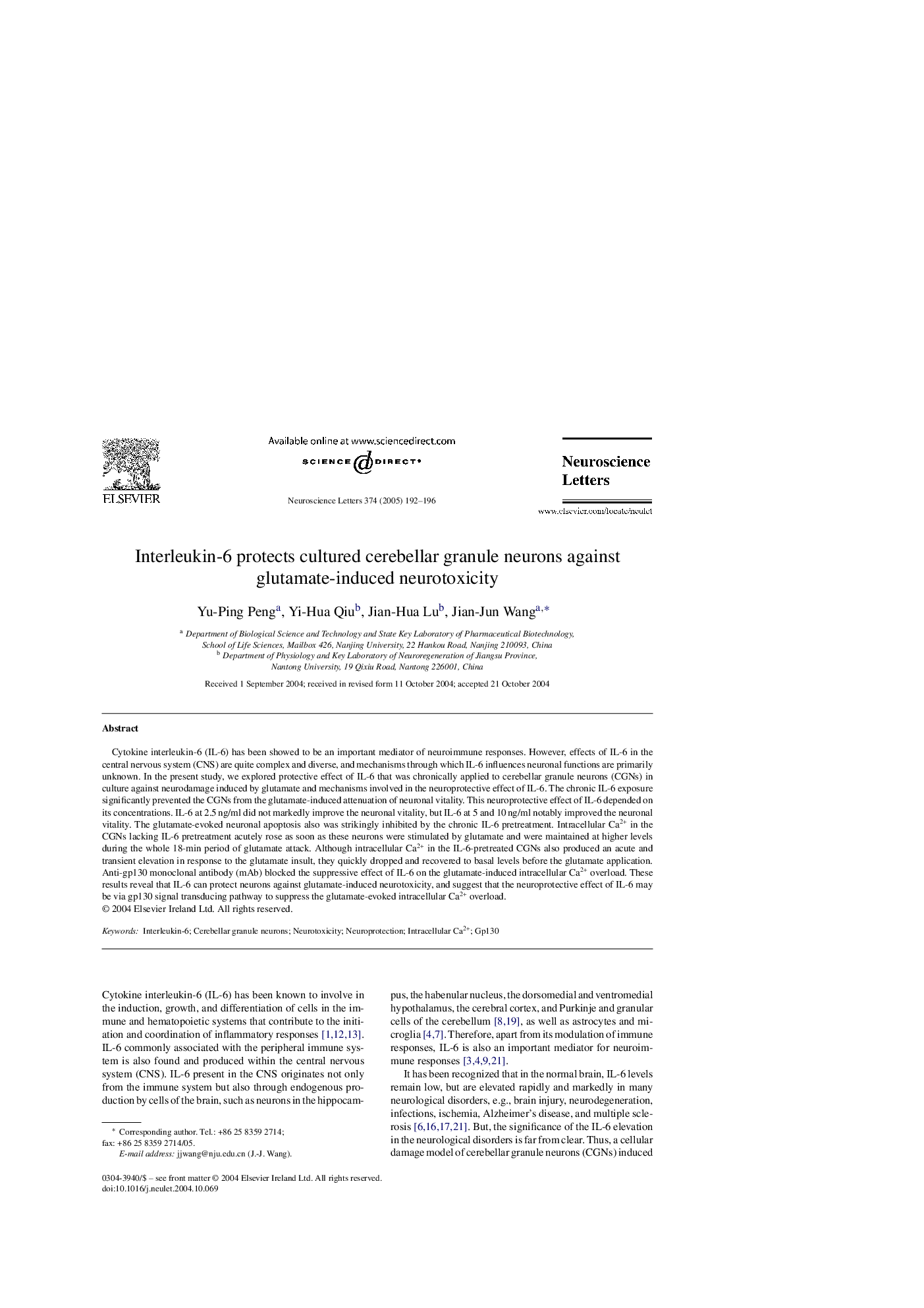| Article ID | Journal | Published Year | Pages | File Type |
|---|---|---|---|---|
| 9429712 | Neuroscience Letters | 2005 | 5 Pages |
Abstract
Cytokine interleukin-6 (IL-6) has been showed to be an important mediator of neuroimmune responses. However, effects of IL-6 in the central nervous system (CNS) are quite complex and diverse, and mechanisms through which IL-6 influences neuronal functions are primarily unknown. In the present study, we explored protective effect of IL-6 that was chronically applied to cerebellar granule neurons (CGNs) in culture against neurodamage induced by glutamate and mechanisms involved in the neuroprotective effect of IL-6. The chronic IL-6 exposure significantly prevented the CGNs from the glutamate-induced attenuation of neuronal vitality. This neuroprotective effect of IL-6 depended on its concentrations. IL-6 at 2.5Â ng/ml did not markedly improve the neuronal vitality, but IL-6 at 5 and 10Â ng/ml notably improved the neuronal vitality. The glutamate-evoked neuronal apoptosis also was strikingly inhibited by the chronic IL-6 pretreatment. Intracellular Ca2+ in the CGNs lacking IL-6 pretreatment acutely rose as soon as these neurons were stimulated by glutamate and were maintained at higher levels during the whole 18-min period of glutamate attack. Although intracellular Ca2+ in the IL-6-pretreated CGNs also produced an acute and transient elevation in response to the glutamate insult, they quickly dropped and recovered to basal levels before the glutamate application. Anti-gp130 monoclonal antibody (mAb) blocked the suppressive effect of IL-6 on the glutamate-induced intracellular Ca2+ overload. These results reveal that IL-6 can protect neurons against glutamate-induced neurotoxicity, and suggest that the neuroprotective effect of IL-6 may be via gp130 signal transducing pathway to suppress the glutamate-evoked intracellular Ca2+ overload.
Related Topics
Life Sciences
Neuroscience
Neuroscience (General)
Authors
Yu-Ping Peng, Yi-Hua Qiu, Jian-Hua Lu, Jian-Jun Wang,
